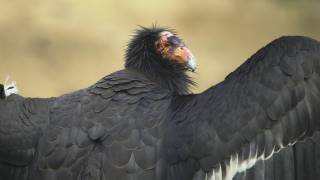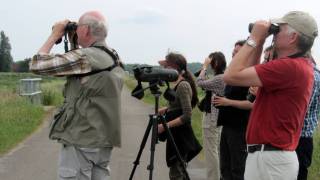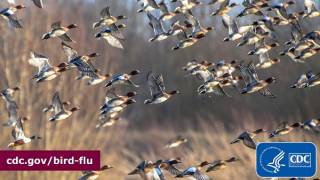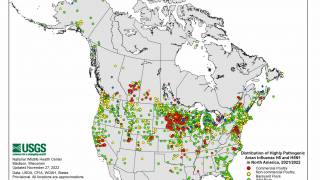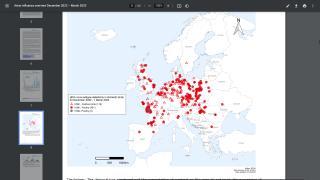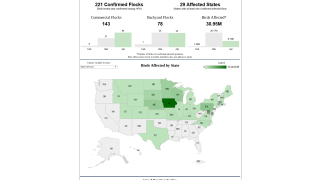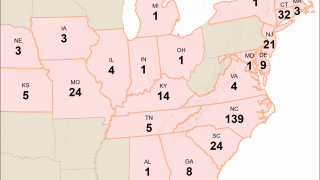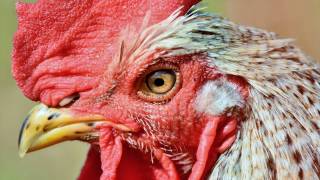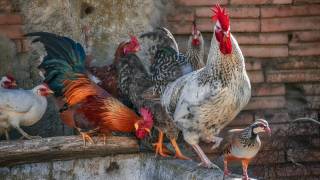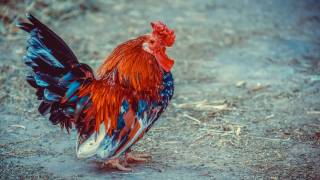‘Bird-Flu’ Lands in South Korea

A serious subtype of influenza, H5N6, has increased in South Korea, just as the country prepares to host the 2018 Winter Olympics.
South Korea has reported 2 avian influenza outbreaks of H5N6 subtype which began on January 26th and 27th, according to the latest notifications from the World Organization for Animal Health (OIE).
Additionally, the publication Meatingplace reports that since December 2017, the H5N6 strain of avian influenza has been reported in Hong Kong, the Netherlands, South Korea and Taiwan.
During 2017, South Korea was forced to cull more than 30 million birds to contain the worst outbreak of bird flu in the country's history.
Globally, there were 860 cases of human infection of H5N in 16 countries worldwide between January 2003 and December 2017. Since 2013, a total of 1565 laboratory-confirmed cases of human infection with avian influenza A(H7N9) viruses, including at least 612 deaths, have been reported to WHO. If the incidence of human cases follows the trends seen in previous years, the number of reported human cases may rise over the coming months. Further sporadic cases of human infection with avian influenza A(H7N9) virus are therefore expected in affected and possibly neighbouring areas.
The ongoing circulation of various virus avian influenza strains (H5N1, H5N2, H5N8, H7N8, H5N6) continues to be a global public health concern.
"A new strain generated by virus reassortment is presumed to have entered the nation (Korea) since October via winter migratory birds," the Animal and Plant Quarantine Agency (APQA) said in a press release.
Avian influenza refers to the disease caused by infection with avian (bird) influenza (flu) Type A viruses. These viruses occur naturally among wild aquatic birds worldwide and can infect domestic poultry and other bird and animal species.
Avian flu viruses do not normally infect humans. However, sporadic human infections with avian flu viruses have occurred, says the Centers for Disease Control and Prevention (CDC).
Avian influenza is a highly contagious viral disease affecting several species of food-producing birds (chickens, turkeys, quails, guinea fowl, etc.), as well as pet birds and wild birds.
Occasionally mammals, including humans, may contract avian influenza
There are many AI virus strains, which are usually classified into two categories according to the severity of the disease in poultry:
- low pathogenic (LPAI) strains, which typically cause few or no clinical signs in poultry,
- and highly pathogenic (HPAI) strains, which can cause severe clinical signs and potentially high mortality rates among poultry.
Bird migration remains one of the most compelling aspects of the avian influenza outbreak. Twice a year, billions of birds migrate vast distances across the globe.
Typically, these journeys follow a predominantly north-south axis, linking breeding grounds in arctic and temperate regions with non-breeding sites in temperate and tropical areas.
Many species migrate along broadly similar, well-established routes known as flyways.
Recent research has identified eight such pathways: the East Atlantic, the Mediterranean/Black Sea, the East Asia/East Africa, the Central Asia, the East Asia/Australasia, and three flyways in the Americas and the Neotropics.
While both flyways largely span different parts of the world, there is one intersection in Siberia where migratory birds cross paths.
This Siberia flyway intersection produces the risk of infected birds spreading various influenza viruses to other regions.
Our Trust Standards: Medical Advisory Committee
- Global Avian Influenza Surge
- Update on avian influenza in animals (types H5 and H7)
- Bird Flu Basics
- Countries in The Flyway
- Avian Influenza "at a glance"
- Highly pathogenic influenza A viruses (infection with) (non-poultry including wild birds), Netherlands
- South Korea Winter Olympics Preparing for ‘Bird Flu’
- Highly pathogenic avian influenza, Korea
- H5N6 outbreak in the Netherlands unlikely to pose major risks to Singapore: Experts Read more at https://www.channelnewsasia.com





